As I was researching for Dalla valigia alla tavola: A journey through Molisan culinary heritage, I made it my personal mission to collect as many cookbooks on Molisan cuisine as possible. As the “region that doesn’t exist,” its recipes aren’t usually celebrated outside the homes of those whose families come from there. I wanted to see what was included in these books and how. And considering I had received so many recipes from participants without any measurements or instructions whatsoever, even after the interviews, I wanted to cross-check with other sources. For example, the recipe for the taralli that ended up in the book, was first written like this:
16 oz di vino bianco (white wine)
2 tsp di Magic1
3 oz di zucchero (sugar)
8 oz di olio (oil)
Farina (flour)
“How much flour?” I asked Libera, who had submitted the recipe, when I interviewed her over the phone.2 Flour, I thought, is the main ingredient here… if anything, shouldn’t it be the one with a measurement? Well, no, she explained, because it’s the texture and consistency you’re after, not an exact amount of flour. After a bit of back and forth, and consulting family recipes, as well as other recipes online/in books, we established a measurement for the purpose of our cookbook and tested the recipe to make sure it worked. I finally got to try Libera’s taralli two years after our phone interview. We did a good job with our rendition, thankfully. But I couldn’t help reflect on how Libera’s must be slightly different every time, as she bakes based on the feeling of the dough, something we can’t fully convey through a written recipe (or over the phone).
How have other books have navigated this issue?
La cucina molisana, volumes 1 and 2, A.M. Lombardi and R. Mastropaolo
The two volumes of La cucina molisana by Annamaria Lombardi and Rita Mastropaolo were published in 1986 and distributed by the region to various molisane associations around the world. Nearly impossible to find today (I even checked at the office of the Federazione delle associazioni molisane del Quebec and there was only one copy of the first volume), I’m lucky that my nonna kept her copies from when the FAMQ originally distributed them to their members. These are hers, which I’ve borrowed.
These books are treasures. There are hundreds of recipes for everything from soups, pasta, meat dishes, to snails and frogs; they are pretty much the definitive collection of molisana cooking and traditional dishes. Featuring measurements like “a glass of wine,” “a slice of lard,” and “un’abbondante manciata di pecorino grattugiato” (an abundant handful of grated pecorino), these recipes don’t get into grams and millilitres. It’s all quanto basta and a piacere (as needed, and as much as you like). Definitely exudes confidence, tradition, and legacy. These are what family recipes look like.3
Because of this, they weren’t particularly useful for cross-checking quantities for ingredients. However, the books sometimes include short blurbs on the history or traditions behind the dishes and offered a look at variations on submitted recipes.
Terra e sapori: Il cuore antico del Molise a Tavola, Elisa Vitone, Biagio Di Bona, Nicola Lanese, and Angela Di Niro
Published in 2021, I found my copy of this book on Amazon. The spirit behind the book is similar to the one we had in creating Dalla valigia alla tavola, but from the context of future generations growing up in Molise, rather than those experiencing culture and identity through diaspora. The preface tells us what to expect within its pages: le ricette, l’amore, la famiglia, la lingua, le stagioni, la natura, il raconto (the recipes, love, family, the language - dialect, particularly -, the seasons, nature, the stories). It resonated with me because we were looking to craft something beyond the plate, too.
While this cookbook includes actual measurements, I love that the recipe procedures are written in a descriptive paragraph, rather than step by step. I really feels like learning from another person, or rather alongside them because they are written in the first person plural (noi, we): prepariamo, formiamo, procediamo… (we prepare, we shape, we proceed). Each recipe is preceded by a short narrative or story.
Abruzzo e Molise a tavola, Susanna Fava and Simona Villa
Part of the Meravigli series “Le grande ricette,” this book was published in 2004 and part of a larger collection of similar cookbooks featuring all the Italian regions (as well as ones focused on pasta, wine, rice, different international cuisines, and more). I got my copy on eBay. These books are printed on recycled paper, which is specified on the first page, linking it to the tradition of butcher paper:
La catapaglia, la tradizionale carta da macellaio, viene prodotta con la classica sapienza dei maestri cartai utilizzando foglie di mais: le irregolarità della superficie ti raccontano di come si può rispettare la nature, utilizzando materiali poveri e allo stesso tempo ricchi di saggezza e amore per le cose buone e genuine. Ora stai sfogliando un libro che è anche il segno di una tradizione degna di essere rispettata.4
Rooted in the study and celebration of cucina povera, this cookbook is divided into an Abruzzo section first (70 pages), and Molise second (40 pages). Though not the most comprehensive, this was the most “typical” cookbook of all my finds: recipes has measurements and simple procedures, with small illustrations throughout. It was also interesting to see familiar recipes in the Abruzzese section.5 I wonder how they decided which recipes went where, because there is a lot of overlap.
Abruzzi e Molise in bocca, Carlo Natali
Another absolute treasure is this book from the In bocca series, published in the 1970s. Featuring the original illustration on its cardboard cover, typical of all the books in the series. I found this in a small used bookstore in Campobasso last summer after avoiding buying it on eBay due to the big price tag.6 I saw it in the window when I passed by and ran in, heart racing.
Rare and absolutely unique, I am still shocked to have it on my desk. It’s definitely one of my prized possessions. Featuring recipes (written in Italian, English, and dialect), illustrations, historical blurbs, and even a glossary of dialect words, this book highlights how all these aspects of culture and heritage intertwine. I love it.
“Atlante dei Prodotti Tradizionali della Regione Molise”
Though this isn’t a cookbook, it has been a huge resource for me as it includes all the typical food products made in Molise. ERSA Molise was a bimonthly magazine covering agricultural information. This issue was published in 2003 and, for some reason, my parents’ had it in a box at home.
This issue covered: distilled spirits and liqueurs, fresh and cured meats, cheeses, pasta & baked goods, fish & seafood, and vegetables from the region. Each item was described based on area and method of production (including rough recipes, when applicable). Also… as I was reading trough the cheese section, I had the idea to match each cheese with an astrological sign. Now, you can find out which Molisan cheese you are (you’re welcome).
Digging Deeper
Each cookbook is unique and brings, along with recipes, its own point of view on history, community, food culture, and politics. Finding and reading all these cookbooks (along with many others) was at once inspiring and intimidating. What could we bring to the table, with everything that is already out there?
While there is so much more I wish I could have written and done - budget limited page length, page length limited writing - I hope that we succeeded in bringing the voices of our community and their experiences to the forefront. For all of us, it was important that this cookbook be of and for the community. I think, for the most part, we did that.
Originally, before I partnered with the FAMQ, I had wanted to create an online magazine. Each issue would explore a different town in Molise through the stories and recipes of its emigrants and their families here in Montreal. I really wanted to get into the nitty-gritty of each place and community: the food, feasts, seasons, dialect, history (here and there). Maybe this work will evolve into that eventually. We’ll see where it takes me.
In her piece on April 15,
asked us: “What Do You Want From a Cookbook?” While she describes what she is wanting to see in and experience through cookbooks lately,7 she also reminds that: “No one way is right; no one kind of cookbook serves everyone.” And I agree because the answer to her title question is (as it always is for historians): it’s complicated and it depends. No two people are looking for or will experience the exact same thing; and no two cookbooks will serve a person the same purpose. Our baggage - cultural, familial, personal, political -, our relationships to food, and our abilities will always evolve and respond differently to the sources around us.What is your favourite cookbook and why?
Food bloggers often get dragged for the long posts we have to navigate before getting to their recipes. Is there a type of post you would stop and read? Why?
What kind of recipes do you prefer to cook with: need all the details; just the vibes, no measurements; or no recipe at all?
Cass
Magic baking powder, which so many women just refer to as Magic in their recipes.
Unfortunately, doing this project at the height of the pandemic forced us to change the original plan: I was supposed to interview people in their homes, while they made the recipes. This would also help with the measurement thing, which I knew would be an issue. Having to do most of the interviews over the phone led to many interesting conversations, as the participants each had their own ways of explaining the procedures.
And these types of recipes are described perfectly by Alicia Kennedy as: “the ones that barely tell you a thing, but also do tell you everything, if you’re on the level with that book.”
Catapaglia, the traditional butcher's paper, is produced with the classic wisdom of master papermakers using corn leaves: the irregularities of the surface tell you about how nature can be respected, using materials that are poor and at the same time rich in wisdom and love for good and genuine things. You are now leafing through a book that is also a sign of a tradition worth respecting.
Of course, Molise and Abruzzo were one province until they separated in 1963. So this is to be expected.
The store doesn’t exist on Google maps and I don’t know the name. It’s around the corner from Intesa San Paolo at P.za Gabriele Pepe, 40, 86100 Campobasso CB, Italy. A must visit if you’re ever in the city.


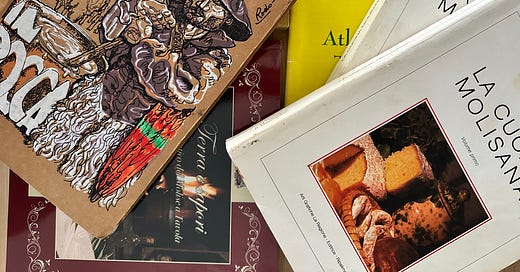




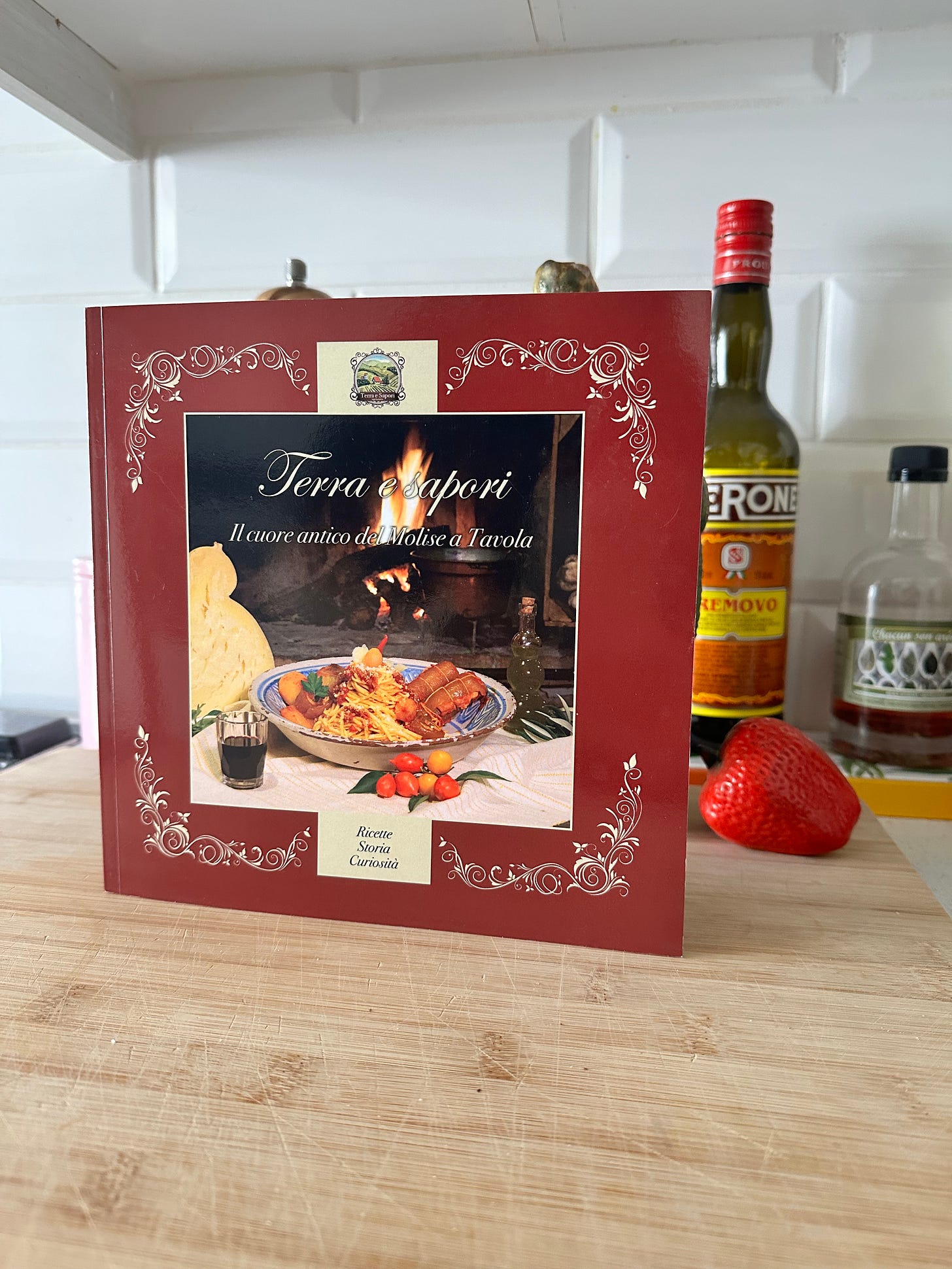
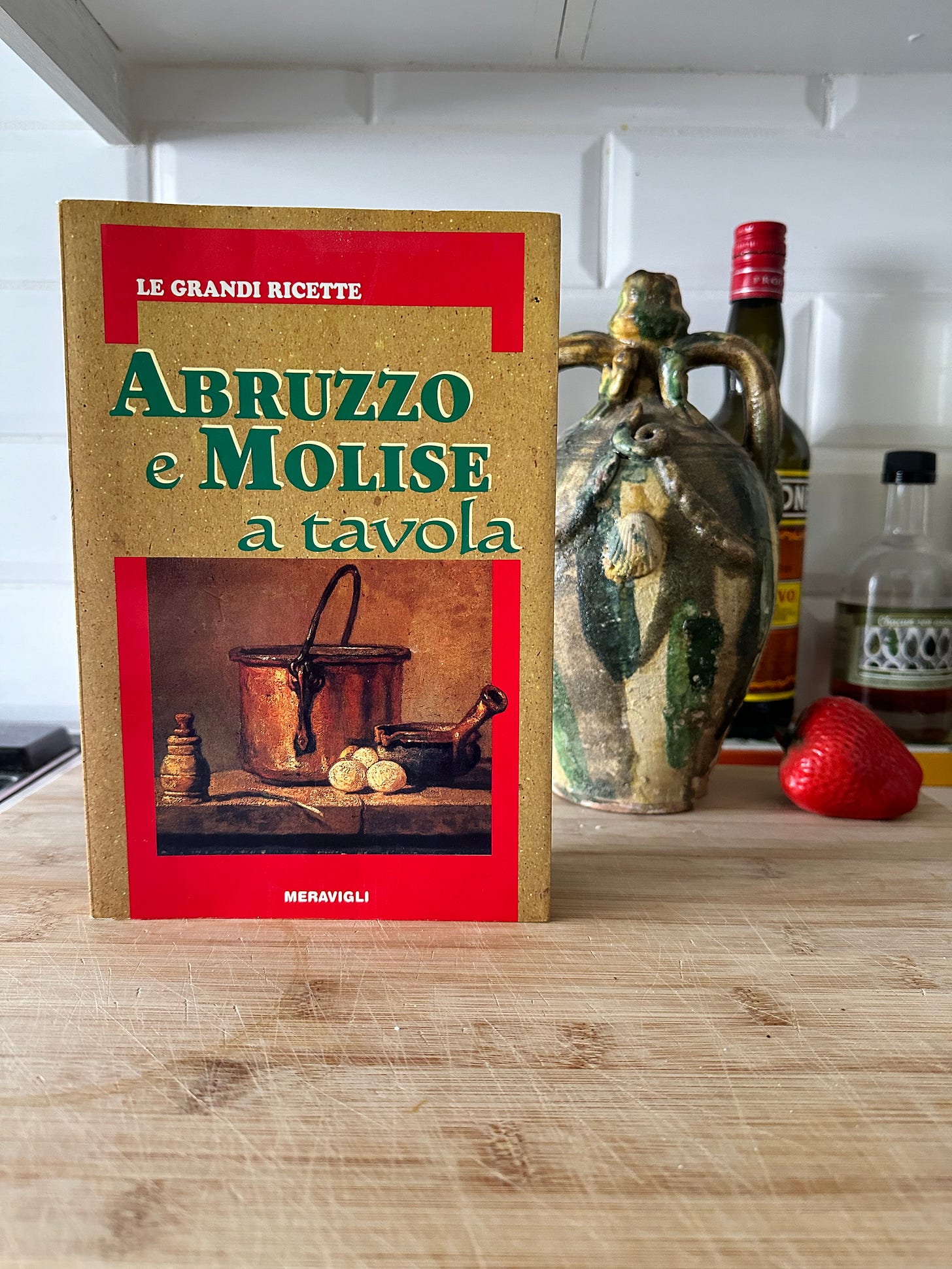
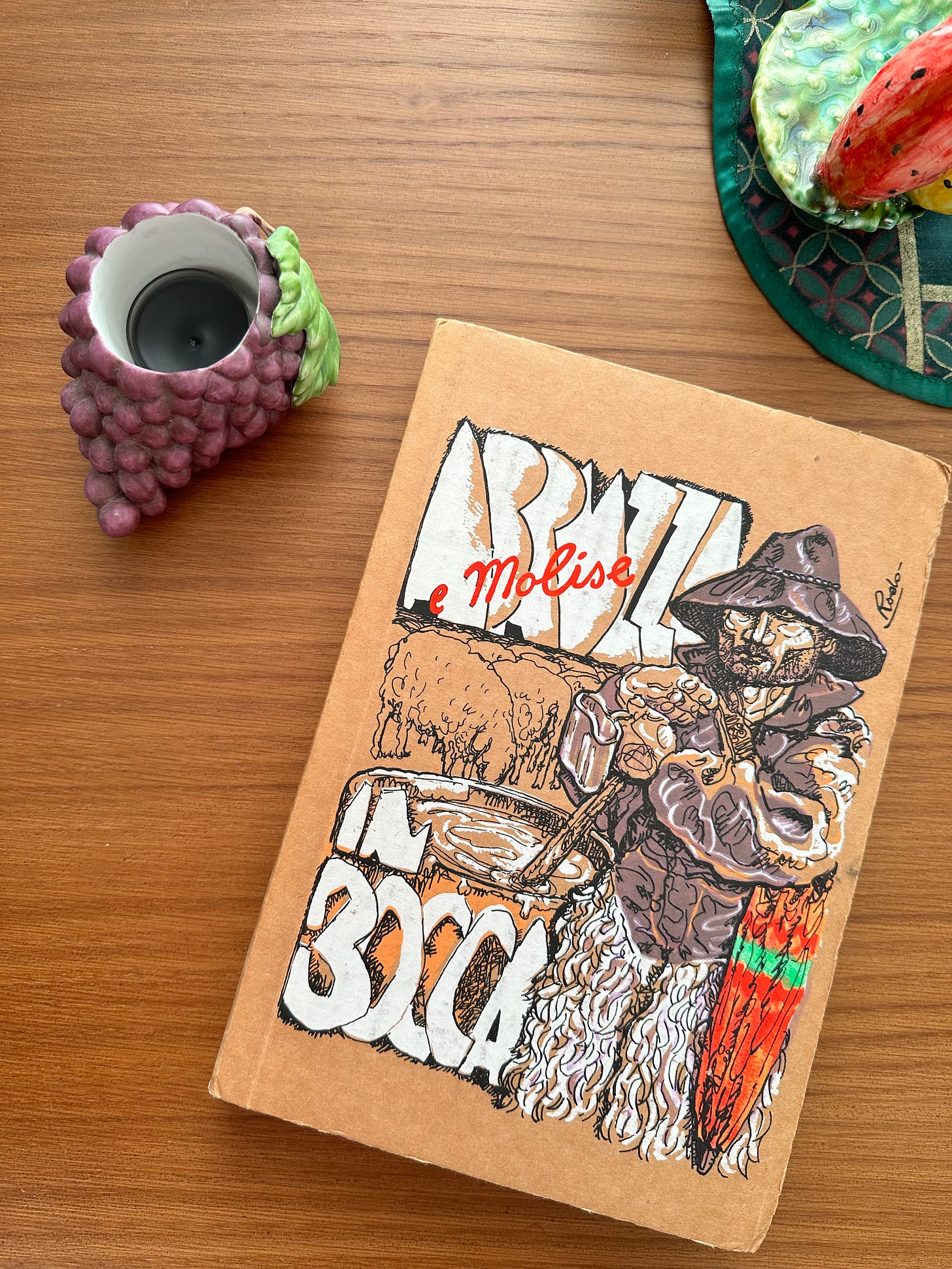
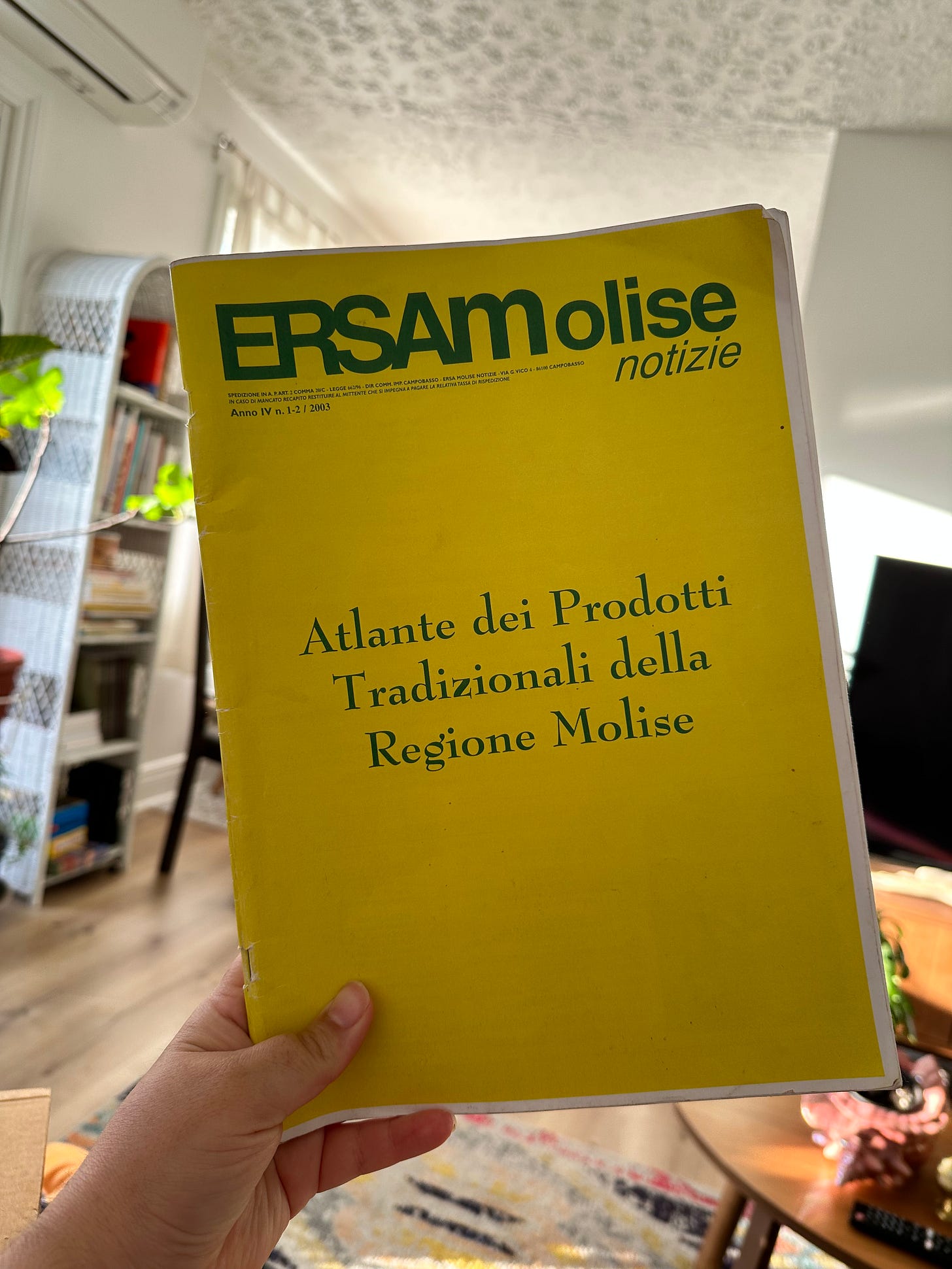

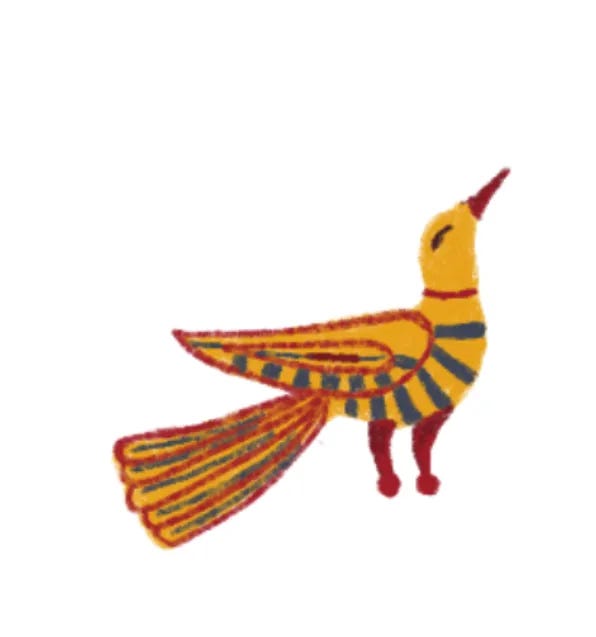
Ahhh, this is so wonderful!!! I am planning a follow-up on using cookbooks as research tools—this will be a key reference!